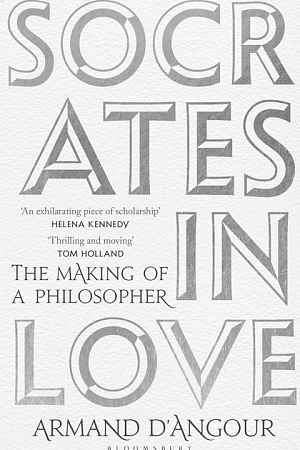Feeling and Knowing: Making minds conscious
Hachette, $39.99 hb, 247 pp
Philosophy
Owning experience
The conversation between body and mind
by Diane Stubbings •

Antonio Damasio (photograph by Basso Cannarsa/Alamy)
In Feeling and Knowing: Making minds conscious, neuroscientist, psychologist, and philosopher Antonio Damasio asks us to imagine life without consciousness. We would, he argues, still have patterns of neurochemical, sense-derived information ‘flowing in our minds, but [that information] would be unconnected to us as singular individuals’.
Continue reading for only $10 per month. Subscribe and gain full access to Australian Book Review. Already a subscriber? Sign in. If you need assistance, feel free to contact us.















Comment (1)
Of the three, perception is probably fundamental. It seems to be a property of most (if not all) animal life, but, pace Thomas Nagel (of ‘What is it like to be a bat?’ renown), we have no real idea of how it arises and, though we assume that sensations are comparable, we also know (e.g.in colour blindness) that they are not necessarily the same for different individuals. Why is this a ‘problem’? It is, essentially because, though the nerve impulses which convey information from (for example) the olfactory epithelium, the retina, the auditory system or the skin operate with, basically, the same biophysical mechanisms, the perceptions which they evoke are quite distinct and seem to depend upon transformative processes which depend, critically, on where in the brain they arise.
Yet it is a reasonable assumption that when, say, my dog is given a general anaesthetic drug, the effects are analogous with what happens to me with that same drug. Thus noci-sensitive pathways probably possess common features. But we cannot know what a conscious canine ‘feels’ or perceives. Furthermore, every dog-owner knows that their pets experience what looks like joy and guilt but that, by no means, indicates that it experiences a comparable ‘consciousness’ to ours, nor that it can think and reflect as we do.
We are also aware that animals (including invertebrates) have memory and we know that these must involve biochemical mechanisms, including the synthesis of new molecules. Yet, we have absolutely no idea (apart from theories, some of them fanciful) of how those chemicals (including new proteins) generate the vivid memories – of people, sounds, words, odours and tastes – which are so familiar to us.
Furthermore, assertions such as ‘the emergent properties of neural networks’ do no more (in my judgement) that state the obvious in different words. I might just as validly theorise that the picture on the screen of my television is an ‘emergent property’ is its circuitry. It does not take us a single step from our starting point.
Leave a comment
If you are an ABR subscriber, you will need to sign in to post a comment.
If you have forgotten your sign in details, or if you receive an error message when trying to submit your comment, please email your comment (and the name of the article to which it relates) to ABR Comments. We will review your comment and, subject to approval, we will post it under your name.
Please note that all comments must be approved by ABR and comply with our Terms & Conditions.